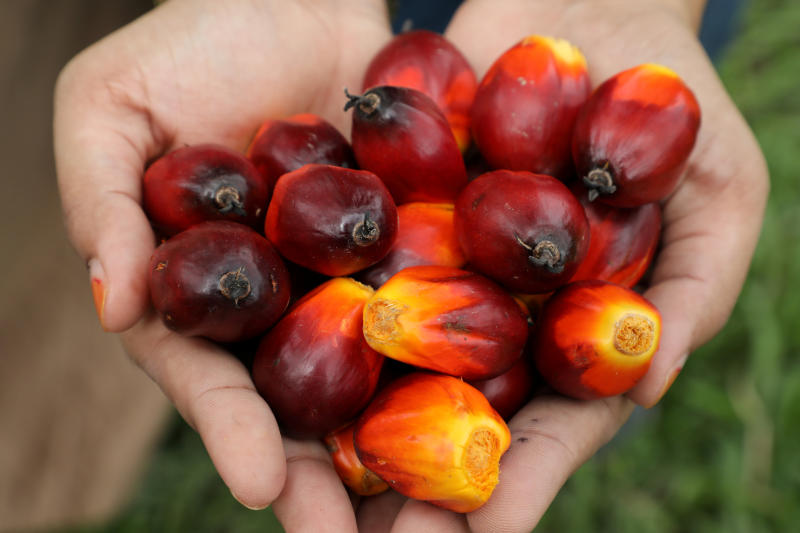In my last blog about Palm oil, I tried to cover the details like type of palm oil, Health and Nutrition Benefits of Palm Oil, Palm oil helps in food security, Palm oil – Land use efficiency, Palm oil, and its many uses & Is palm’s success its greatest enemy?

After attending this webinar, I decided to dispel some false information about it.
Remember that our well-meaning sentimentality can have profoundly negative consequences for people trying to work their way out of poverty. This type of impact is facing by the palm oil industry too. There are many myths about this miracle oil, let’s try to dispel some of them.

1) Palm oil is the leading cause of orangutan extinction: –
Almost three-quarters of the total land area in Malaysia is under tree cover (73.7%), and of this total 56% is natural forest. Out of this abundance of the forested area – totaling 18.25 million hectares – almost four-fifths (79.6%) is given over to permanent reserved forest, national parks, and wildlife sanctuaries. That’s 14.52 million hectares in all with a further 1.35 million hectares entirely maintained as either national parks or wildlife sanctuaries outside the permanent rainforest area; a further 50,000 hectares are protected for wildlife in what is designated conversion forest.4 In total, 2.38 million hectares have been identified for long term sustainable development. Significantly, the Malaysian Government has also recently pledged to back the Malaysian Palm Oil Wildlife Conservation Fund to the tune of RM20 million, equivalent to £4.19 million, and it has initiated a program to set aside a further 300,000 hectares for the conservation of tropical rainforest including areas where the orangutan can be found. The green lobby’s interest in preserving forests and the fate of the orangutan is not entirely disinterested. Claims that the orangutan’s fate hinges on palm oil cultivation in Malaysia serve as a powerful fundraising tool but do not necessarily translate into practical help for the great apes or other endangered species.
2) Palm oil is hidden off the list of product ingredients: –
Palm oil s never forged because it simply can’t be forged. Still, products are faked up when a manufacturer doesn’t indicate the usage of vegetable fats (palm or sunflower oils). This is the only way to mislead consumers.
3) The world is refusing palm oil usage & switching to other oils:-
All oils have their merits & demerits. Boycotting particular oil by looking to its one side is not a correct thing. Research says that Olive oil – contains high amounts of saturated fat that are considered as bad fat. Heating the oil beyond its smoke point modifies the oil and is harmful to the health. Can cause dermatitis, weight gain, and respiratory complications to those who are allergic to it. Canola Oil – Can emit toxins when subjected to high temperature. Contains high levels of Omega-6 fatty acids that are associated with inflammation – the primary cause of chronic diseases. Sunflower oil is a transfat causing blood problems, strokes, heart attacks, and other diseases. Thus, it is used only for frying and replaced by palm oil in all other cases.
Survey says that the production volume of palm oil in 2012/13 was 56.38 MMT, which increase to 74.02 MMT in 2018/19. Import volume on palm oil has increased worldwide over the past few years. According to the World Bank, in 2017, the average price of palm oil stood at 649 nominal U.S. dollars per metric ton. It was expected to rise to about 744 nominal U.S. dollars per metric ton by 2025. In 2020, the pandemic is rapidly spreading in the country causing all-around distress. India went through a prolonged phase of lockdown. Palm Oil Products imports decreased by 31% to 4.59 MMT during the same period when compared to 6.66 MMT done in the January-July 2019 period. The consumption of vegetable oils in India in normal times was around 2 million metric tonnes every month. However, the impact of the lockdown is such that the monthly off-take has plunged to between 1.20 to 1.30 MMT. The nearly 40% plunge in consumption is due to the continued closure of the Hotels, Restaurants, and Cafeteria/Catering sector (HORECA).
Note down this point.
These were some of the Dispelling Myth about Palm oil. The world is still in the grip of COVID-19 & like another industry palm oil is also significantly impacted. We can hope that like a breeze of wind this time pass away soon & we can raise once again keeping every false myth back.
For more details about the Malaysian Palm Oil Council, please visit http://www.mpoc.org.my/
++++++++++++++++++++++++++++++++++++++++++++++++++++++++++++++++
Check the old blog post to know about Palm oil in detail :- http://vijvihaar.in/2019/12/16/palmoil-betterhealthiertastier/
++++++++++++++++++++++++++++++++++++++++++++++++++++++++++++++++

We know so less about this oil. You’ve done a great job to let us know these facts about Palm oil.
I have never read about palm oil. Your post is such an eye opener. We should research more before making a decision.
Palm Oil has so many benefits and needs to be used more widely. It is nice to see you bursting so many myths about the oil and setting the record straight over here.
Wow !! I was literally unaware about the pros and cons of Palm oil. We all should definitely give an another try to Plam oil and try not to boycott and switch to other oils 🙂
– Representative of TCT
Palm Oil is quite underrated oil in India. Thank you for bringing up our notice through this post.
I have never used palm oil but after reading this I would love to try this out. Thanks for letting me know about this facts.